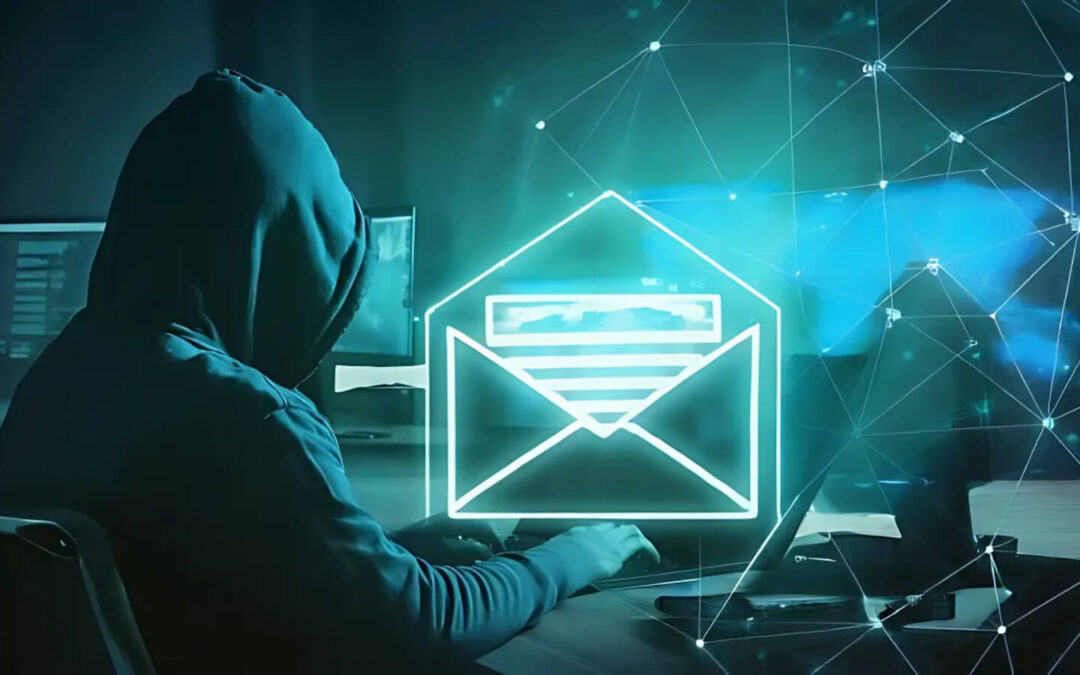Every day, an estimated 3.4 billion malicious emails flood inboxes around the world. But it’s not just the volume that’s concerning. It’s how convincing these threats have become.
Today’s cybercriminals aren’t relying on obvious scams and clunky spam messages. They’re using AI to craft polished phishing emails, mimic trusted contacts, and sneak past basic security filters. For businesses, that means one careless click could lead to a serious data breach, ransomware attack, or financial loss.
In this post, we’ll go over the most common email threats targeting businesses today and how to stay protected. If you’re unsure where your email security stands, we’re here to help you make sense of it all.
Why Email Is Still a Top Target
Email remains one of the most common entry points for cyberattacks because it’s both essential and vulnerable. Most businesses rely on email for everything from internal communication to client outreach, which makes it a prime opportunity for hackers to strike.
Criminals count on the fact that employees are busy, moving fast, and unlikely to scrutinize every message. A well-crafted email can slip past even the most cautious team member. Without the proper protections in place, it only takes one mistake to compromise your systems.
Top 5 Email-Based Attacks Putting Businesses at Risk
1) Phishing: The Art of Deception
Phishing is perhaps the most common email threat businesses face. These messages are designed to trick recipients into clicking a malicious link or handing over sensitive information like passwords or banking credentials.
Modern phishing emails are highly convincing. They might reference internal projects, pose as vendors, or look like a routine password reset from Microsoft or Google. The goal is to create enough urgency or familiarity for the recipient to act without thinking.
More advanced versions, like spear phishing, use personal details to increase the likelihood of success. These emails are harder to detect and far more effective. The more tailored the message, the more likely it is to succeed.
2) Spoofing: Faking the Sender
Spoofing involves forging an email address to make it look like the message came from someone you know (often a CEO, coworker, or partner company). The attacker’s hope is that you’ll trust the message based on who it appears to be from, even if something seems slightly off.
These attacks are especially common in financial fraud attempts, such as fake wire transfer requests. Since the email “looks right,” recipients may not verify the request through another channel.
Businesses can reduce spoofing risks by setting up proper email authentication protocols like SPF, DKIM, and DMARC. At Sea to Sky, we help clients implement and manage these protections to make it harder for bad actors to impersonate your domain.
3) Malware Attachments: Hidden Dangers in Innocent-Looking Files
Many email threats come in the form of attachments, often disguised as invoices, shipping updates, or job applications. These files might look routine, but one click can unleash malware designed to steal credentials, lock up data (ransomware), or grant backdoor access to your systems.
Common formats include PDFs, Word documents, and Excel files with embedded macros. These can trigger downloads or give attackers remote access without your knowledge. Even savvy employees can fall for this if they’re not trained on what to look for.
4) Spam: Not Always Harmless
Spam might seem like a simple nuisance, but it can carry serious risks. While much of it is just unwanted marketing or promotions, some spam emails contain dangerous attachments or links.
Worse, when spam filters are not correctly tuned or updated, your inbox can become overwhelmed. This increases the odds of a malicious message going unnoticed or being mistaken for something safe.
5) Business Email Compromise (BEC): When a Real Account Gets Hijacked
Unlike spoofing, Business Email Compromise involves an actual email account that’s been taken over by an attacker. Once inside, the criminal can monitor conversations, manipulate ongoing discussions, or send out requests for payments, credentials, or sensitive information.
Because these messages come from a legitimate inbox, they’re especially hard to detect. Some attackers watch quietly for weeks before making their move. They wait for the perfect time to strike, such as during a high-stakes deal or employee transition.
How to Stay Protected
Knowing the threats is only half the battle. Here’s what you can do to protect your business and your inbox:
- Use Advanced Spam and Virus Filtering: Basic filters aren’t enough anymore. Our security tools combine signature-based detection with behavioral analysis to catch threats others miss.
- Set Up Email Authentication (SPF, DKIM, DMARC): These protocols help verify the sender’s identity and block impersonation attempts.
- Enable Multi-Factor Authentication (MFA): Require it for all business email accounts to prevent unauthorized access, even if a password is compromised.
- Provide Regular Cybersecurity Training: Human error is still the leading cause of breaches. Equip your team with the knowledge to spot suspicious messages, avoid risky clicks, and report concerns quickly.
- Partner with a Trusted IT Provider: Ongoing monitoring, proactive updates, and expert support go a long way in keeping your business secure.
Don’t Face Email Threats Alone
Email attacks are getting smarter, faster, and more convincing. By understanding how today’s threats operate and investing in the right tools and support, you can dramatically reduce your risk.
At Sea to Sky Network Solutions, we help businesses like yours take a proactive approach to email security. From advanced filtering to managed threat detection, we’ll work with you to protect what matters most.
Need help evaluating your current email setup? Let’s chat.


